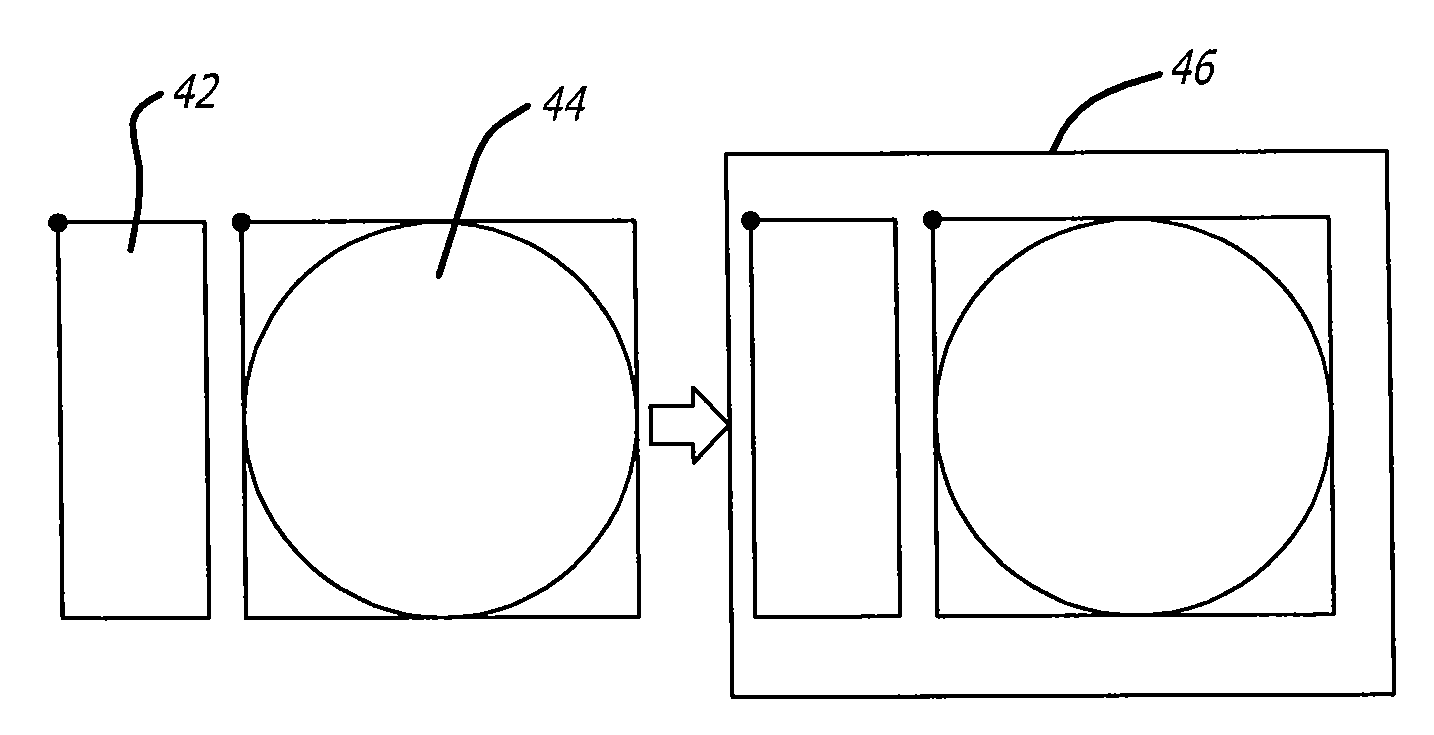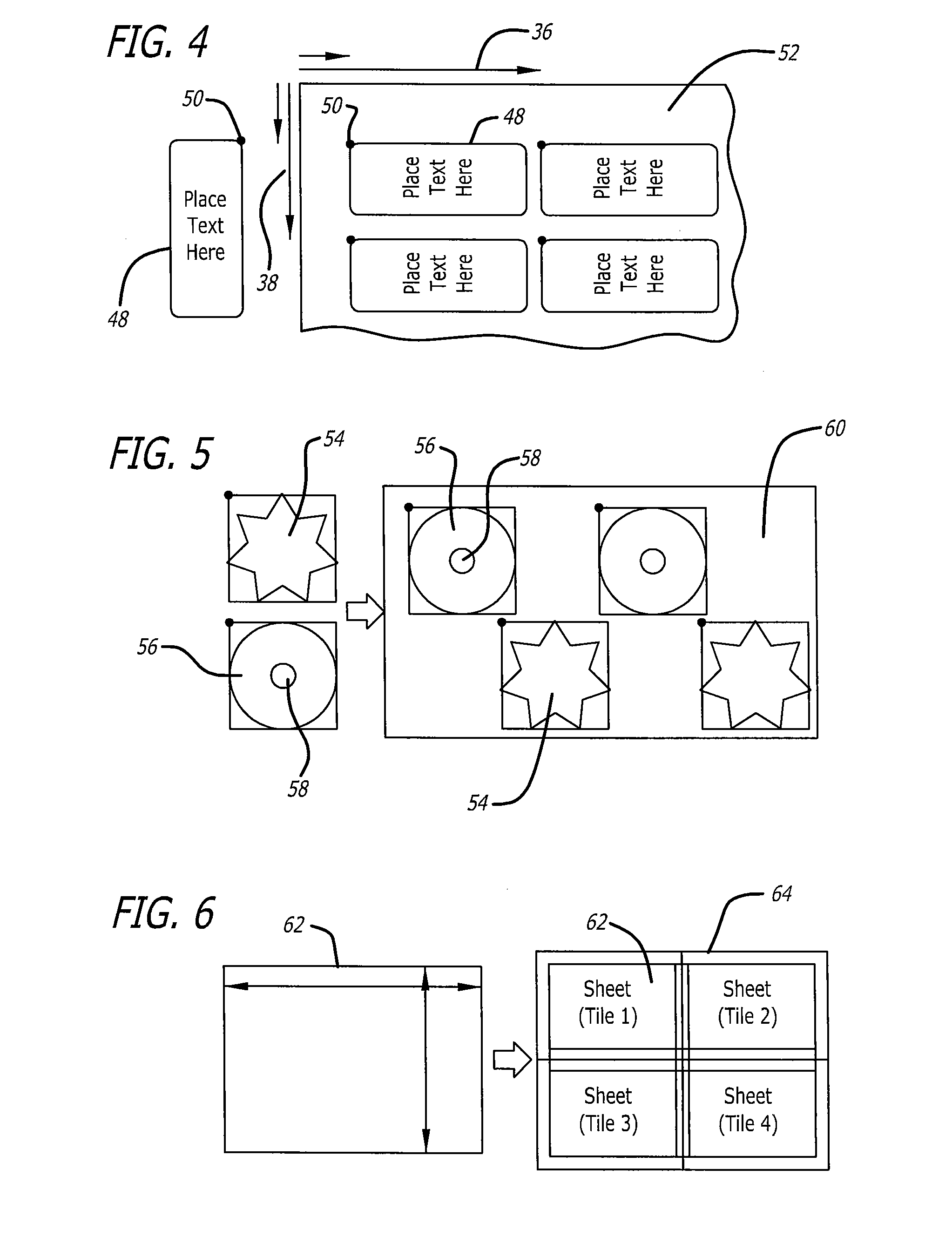Defining virtual shapes to position text and graphics
a technology of text and graphics, applied in the field of defining virtual shapes to position text and graphics, can solve the problems of not well adapted to the defining of table and pitch approach, affecting the shape of graphics on the sheet, and the desired shape is much more complex than a simple square or circl
- Summary
- Abstract
- Description
- Claims
- Application Information
AI Technical Summary
Benefits of technology
Problems solved by technology
Method used
Image
Examples
Embodiment Construction
[0032]As discussed above, the present invention relates to an application-independent collection of page demarcation instructions that is more robust than the table and pitch method described above. Unlike the table and pitch method, these new instructions define virtual shapes that are independent of the sheet. These virtual shapes, which can also be called “panels,” can then be referenced to one or more actual sheets using x-axis (left-to-right) and y-axis (top-down) coordinates, with respect to the top-left corner of the sheet.
[0033]In one embodiment of the present invention, an end-user can view a shape on a display, such as a computer monitor, a kiosk screen, the screen of a personal data assistant or other digital device. The shape may correspond, for example, to a complex label shape. After the user has customized and / or personalized text, graphics or other information to be printed, the software may apply a rotation to the shape as it is referenced onto the page to be printe...
PUM
 Login to View More
Login to View More Abstract
Description
Claims
Application Information
 Login to View More
Login to View More - R&D
- Intellectual Property
- Life Sciences
- Materials
- Tech Scout
- Unparalleled Data Quality
- Higher Quality Content
- 60% Fewer Hallucinations
Browse by: Latest US Patents, China's latest patents, Technical Efficacy Thesaurus, Application Domain, Technology Topic, Popular Technical Reports.
© 2025 PatSnap. All rights reserved.Legal|Privacy policy|Modern Slavery Act Transparency Statement|Sitemap|About US| Contact US: help@patsnap.com



